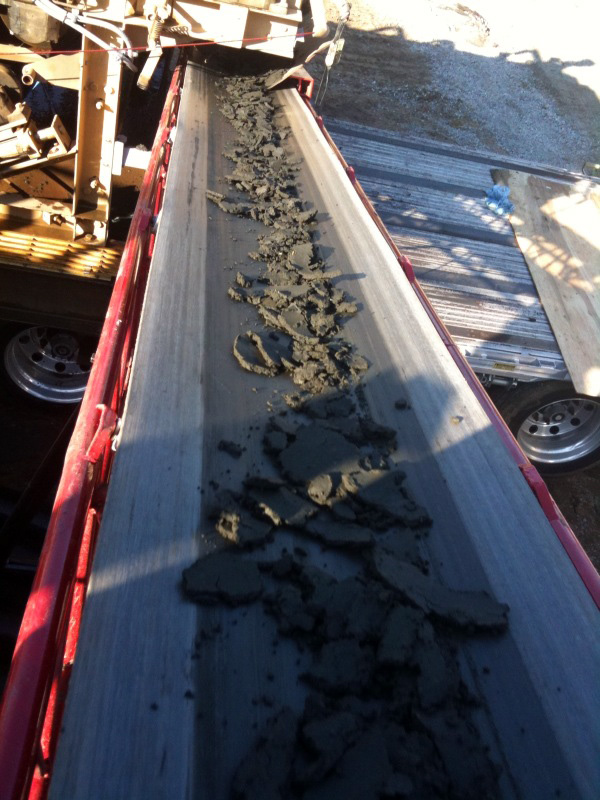Why the Sludge Conveyor Is Built for Tough Conditions
A well‑designed sludge conveyor is more than just a tool—it’s a lifeline when handling corrosive, sticky, and damp solids that other conveyors choke on. At E‑ZLIFT Conveyors, our Troughing‑Roller Sludge Conveyor (model TRS‑050) is engineered to thrive in harsh environments like water treatment plants. Understanding what makes it specially built helps you choose the right equipment, protect your team, and maintain productivity.
What Makes Them Different
Unlike belt or screw conveyors that often struggle with viscous, sticky sludge, a properly designed sludge conveyor handles dewatered solids with less clogging or frequent maintenance. The TRS‑050 stands out by combining several corrosion‑resistant, heavy duty, and maintenance friendly components:

- It uses a belt with smooth PVC covers on both sides, 200 lbs per inch of width work load, and stainless steel staple lacing.
- Idler roller design: 1.9″ outside diameter PVC rollers with UHMW sleeve bearings and automatic lubricant release. Return idlers placed on 120″ centers; carrying idlers on 30″ centers.
- Frame design uses high strength steel tubing: 7/8″ O.D. tubing on 12′ & 16′ lengths; for longer models (21′ to 36′) 1‑1/4″ O.D.
- Safety and durability features like belt take‑up adjustments with stainless steel hardware, self‑cleaning drive & idler belt pulleys, and optional powder coat finish.
These specs make it a rock solid option for sludge, muck, dewatered solids, or other challenging material streams.
Corrosive Environments? No Problem
One of the biggest challenges for conveyor systems operating in wastewater treatment plants and sludge-heavy environments is corrosion. Constant exposure to moisture, acids, and organic matter can degrade traditional conveyor components quickly. The TRS‑050 sludge conveyor is specifically engineered to withstand these conditions. It features a powder-coated steel frame, with an optional upgrade to stainless steel for even greater corrosion resistance—ideal for aggressive or chemical-laden environments.
In addition to a rugged frame, the conveyor includes a smooth PVC belt with stainless steel staple lacing, which resists rust and wear more effectively than standard belts. Self-cleaning pulleys and idler rollers reduce material buildup, keeping the system running smoothly even when handling sticky, abrasive, or damp materials. These features work together to ensure the sludge conveyor performs reliably over time, even under the harshest operating conditions.
Best Practices for Operating a Sludge Conveyor Safely & Efficiently
Knowing what features a sludge conveyor brings is one thing—using them properly ensures longevity, safety, and minimized downtime. To get the most out of your TRS‑050 or any sludge conveyor:
- Always match load type & weight to the conveyor’s capacity. Overloading sludge or solids can strain the belt, damage drives, or deform belt edges.
- Regularly inspect rollers, idlers, and pulleys. Replace worn rollers that cause belt sagging or misalignment.
- Use the optional drip pan under the returning belt (within frame) if provided, to capture overflow or liquid carryback.
- Maintain belt tension and take-up adjustments—stainless steel hardware helps here. If tension is too loose, belt slippage, wear, and tracking issues arise.
- Clean the conveyor surfaces, especially pulleys and rollers, to prevent material buildup. Sludge can cake up, which degrades performance and increases corrosion.
Many of these practices align with OSHA’s conveyor safety standards, which emphasize guarding, emergency stops, and proper maintenance protocols to prevent injury and ensure equipment reliability.
Use Cases & Match‑Fit Applications
The TRS‑050 is ideal in settings where sludge conveyor performance often fails:
- Water treatment plants handling dewatered sewer sludge.
- Sites with frequent wash‑downs, humidity, or exposure to corrosive chemicals.
- Applications where sticky or viscous solids (mud, sludge, fine solids) are being transferred, and belt conveyor style is better than screw or auger style due to lower clogging.
Because the belt speed is approx. 140 feet per minute and the conveyor comes in belt widths ranging from about 18″ to 24″ (depending on model) with different model lengths, you can size the unit to your throughput requirements.
Why Investing Quality Pays Off
A well‑built sludge conveyor like the TRS‑050 isn’t just a purchase—it’s an investment in reliability, worker safety, and lower maintenance burden. With features like corrosion‑resistant components, self‑cleaning idlers, strong frame design, and high load capacity, this model shows how specialist conveyors can solve problems others fail at.If handling sludge, dewatered solids, or sticky materials is part of your operations, choosing the right sludge conveyor can save hours of maintenance, costly downtime, and health risks for your crew. Explore E‑ZLIFT’s Sludge Conveyor models and parts specs to ensure you pick a unit built for your toughest conditions.
